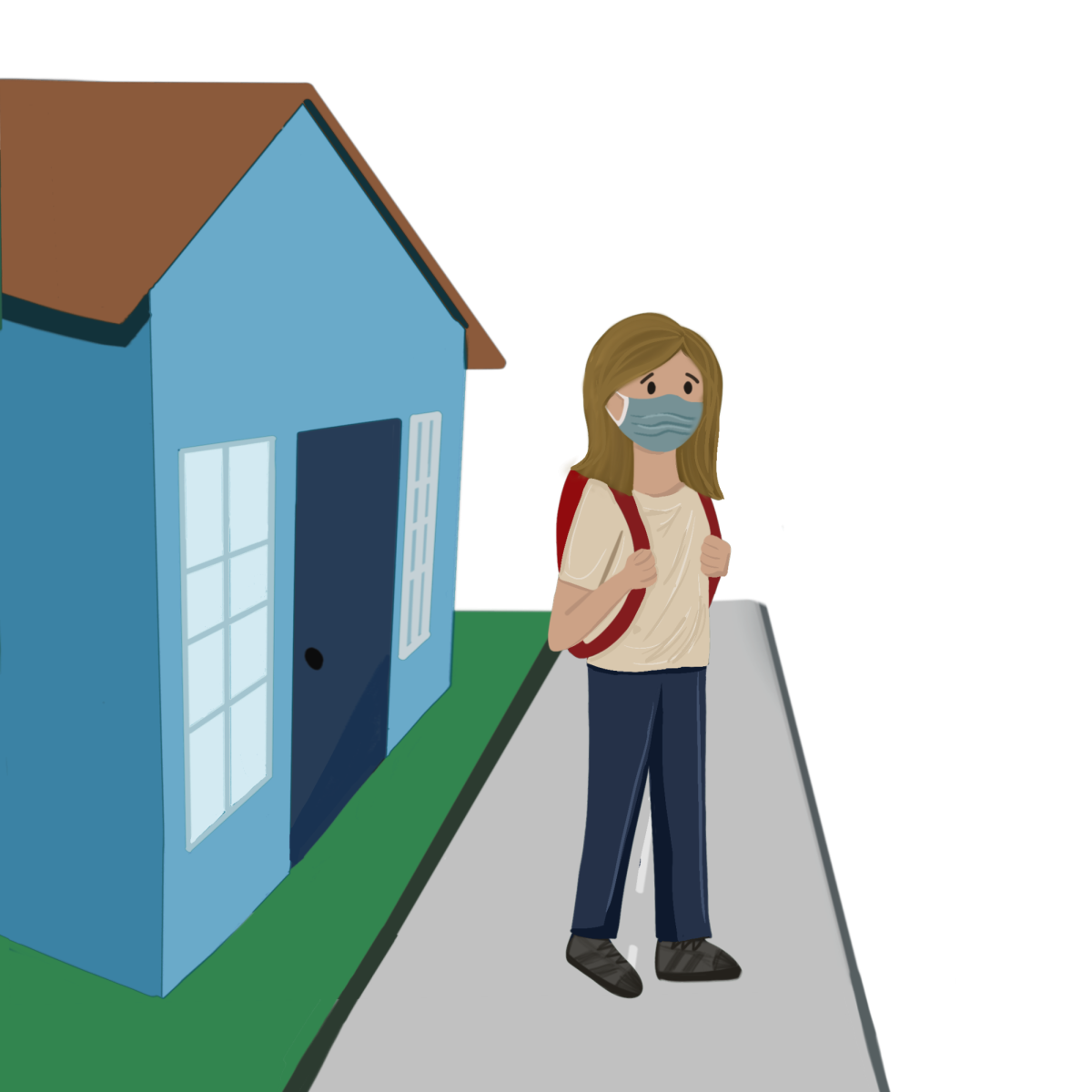As winter approaches, more students will wake up with symptoms of a cold: the icky feeling of a sore throat, runny noses and bouts of coughing. They’re then confronted with a choice — will they put on a mask, take some lozenges and go to school? Or will they take the day off and crawl back into bed? Unfortunately, many people choose the first option. Two of my classmates recently told me about instances where they came to school immediately after testing positive for COVID-19, ignoring the isolation period recommended by the Centers for Disease Control and Prevention. The first student did so to take an end-of-semester final exam and the other felt compelled to come to school for a standardized test.
Their explanations took me by surprise and I was disappointed that both of these people had knowingly put everyone else at risk of exposure. The idea of people deliberately coming to school after testing positive for COVID left me concerned not just for my own health, but for the health of all the people I interact with, especially my 86-year-old grandparents who live just minutes away from me.
For people who have pre-existing health conditions or weaker immune systems, COVID can have severe effects. Elderly adults are also extremely susceptible to it — 85 percent of COVID-related deaths have been in people 65 years old or older, according to Mayo Clinic. By coming to school with an infectious sickness, students are doing a disservice to their surrounding community.
Although I was initially taken aback, I began to feel a little bit more sympathetic towards these friends when I realized that they are part of the larger population of Palo Alto High School students who prioritize their academic goals over their health. According to an Oct. 24 to Nov. 3 opt-in survey by Verde Magazine of 155 Paly students, 82.4 percent of students said they had previously come to school while sick.
But coming to school sick is just one of the more extreme examples of a student culture that encourages and praises stubborn perseverance through challenging times. On a day-to-day basis, students often inadvertently cultivate a shared mentality of “powering through the week” by talking about how many “all-nighters” they’ve pulled to study for a test or by comparing their hours of sleep. As a result of sleep deprivation, many students rely on caffeine to get through the day, which further perpetuates the “perseverance culture.”
Jane, a junior whose name has been changed to protect her identity, said she felt compelled to come to school with a sinus infection last year so that she wouldn’t have to miss the week before final exams.
“I was so scared to miss more tests because I felt like I just could never catch up,” Jane said. “I would end up taking them and doing bad on them because I wasn’t feeling good and I had a headache. I was more focused on pretending to not be sick than actually participating or even learning in class. … that’s just terrible for a student to feel.”
Jane said that coming to school instead of resting at home made her recovery much longer than expected and that her condition got worse after she was exposed to the flu.
“I missed more than a week of school because people came to school sick,” Jane said. “And it [the absence] really impacted me. … I got so much burnout because I would have to take four tests a day after I got back because so many teachers stack tests on the same day or during an interval of two days.”
While there isn’t a quick fix to the pressure that students feel, teachers can alleviate the burden of missed instructional time in a few ways. For health-related absences, students are granted a one-day extension for every day missed, according to the Paly Student Handbook. While the policy is effective for short-term absences, it isn’t always enough for students who miss more than a week of instruction. Teachers should consider extending deadline periods on a case-by-case basis, so students like Jane aren’t overwhelmed by compounding tests. Many teachers do work closely with students to help them catch up, especially during instructional periods like PRIME and study hall. However, a school-wide policy that adds a prolonged extension may help students who are absent for over a week.
Another concern of sick students is missing out on learning new content. By uploading videos of their lectures on Schoology, teachers can help students learn from home. A few of my teachers do this regularly and it is a helpful tool even for students who did not miss the class, because they can watch the lesson at their own pace and rewind if they do not understand certain concepts.
At the end of the day, teachers’ efforts to accommodate student absences only go so far. As difficult as it may be, changes need to be made from within. Students ultimately have the responsibility to choose whether or not they’ll be stepping out the door the next time they’re sick.



